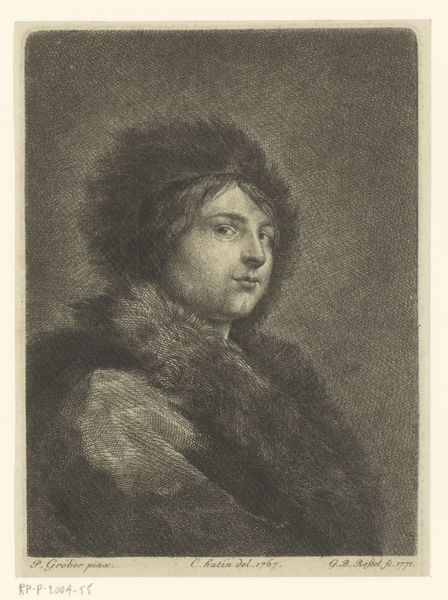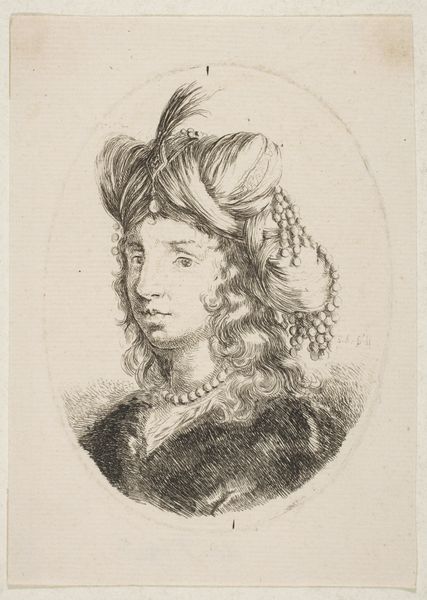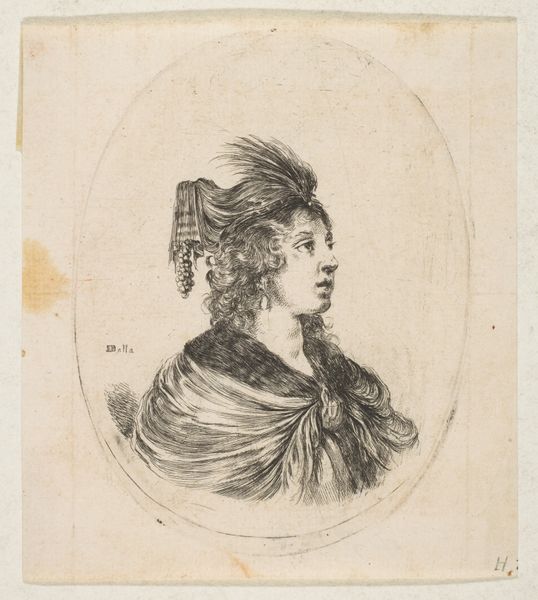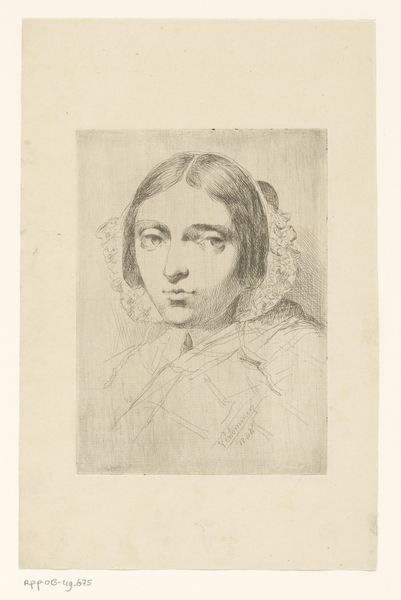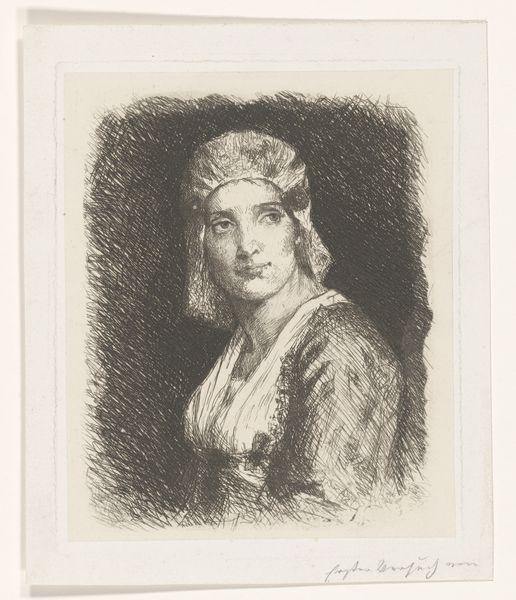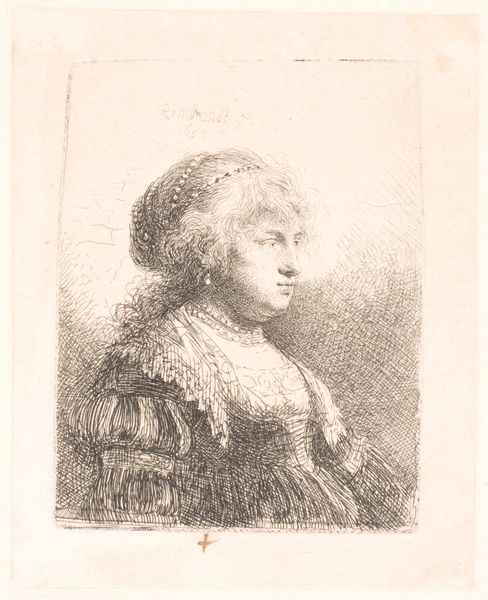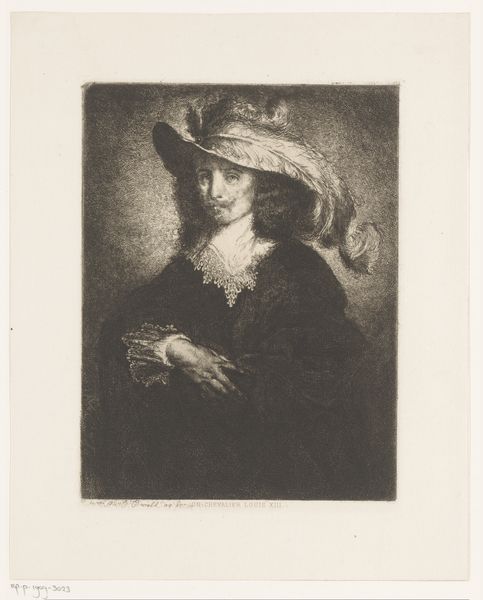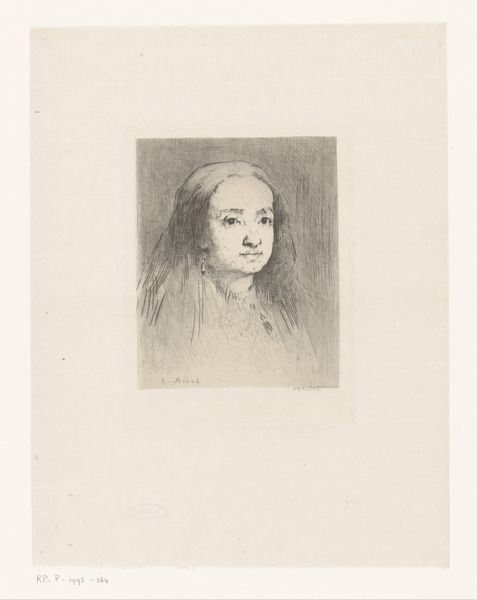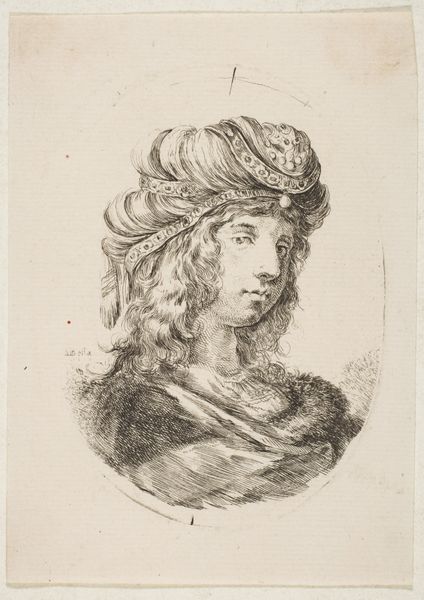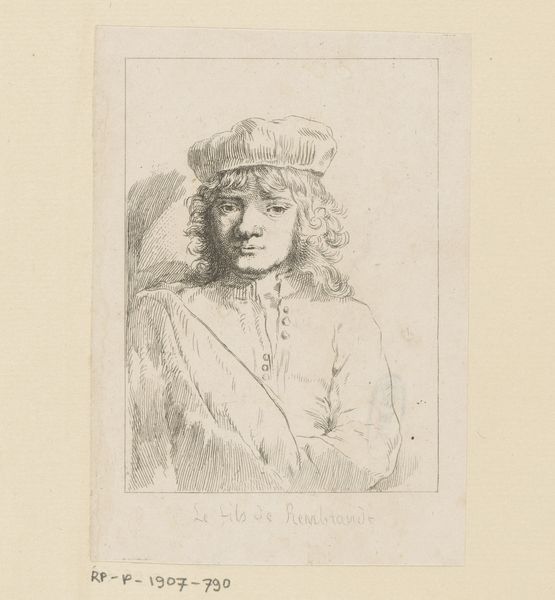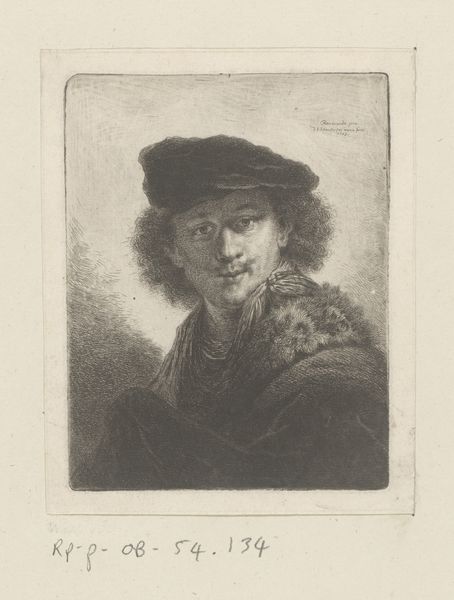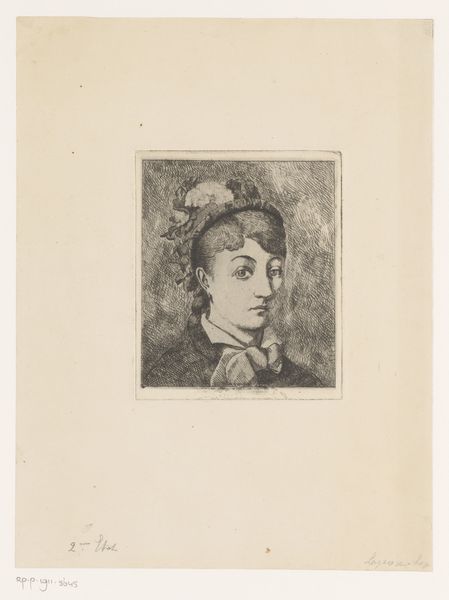
print, engraving
#
portrait
# print
#
history-painting
#
engraving
Dimensions: height 155 mm, width 121 mm
Copyright: Rijks Museum: Open Domain
Curator: Let’s turn our attention to this print titled "Jonge vrouw met bontmuts en bontkraag," or "Young woman with fur hat and fur collar." Christian Gottfried Schultze made it in 1771. Editor: What strikes me immediately is the texture, or, rather, Schultze's commitment to capturing it in engraving. That fur looks almost edible. Curator: You know, the way the lines create depth and dimension is remarkable. This printmaking process, the repetitive actions, that speaks to a certain industrious spirit of the era, doesn’t it? Editor: Absolutely! Consider how widespread the fashion for fur was, and its relation to trade. Someone had to trap these animals, prepare the pelts, turn them into garments, and of course someone would buy them. All are invisible hands. Also invisible hands of those who crafted this work. Curator: True, and prints like this helped spread the image and prestige of the wealthy class. This technique made copies affordable so wider group of people could own artwork with status objects depicted on it. Isn’t it also intriguing how it seems like Schultze might have been trying to channel Rembrandt's style? Editor: The fur collar hides what’s beneath: her chest and shoulders. Is the intent of Schultze in line with other similar history painting prints, such as to simply create artwork with accessible material? Curator: Well, I imagine Schultze, wrestling with those materials—metal, ink, paper—was absorbed with portraying the young woman’s persona, not her social background or labour exploitation involved in her costume. There's a directness, an attempt to get under her skin and perhaps show the fleeting soul of hers. Editor: A fleeting soul wrapped in layers of fur made from a dead animal! It brings up an interesting point: that these prints immortalize something temporal, but only because of intense labour, consumption and transformation of matter! Curator: True… but in the end, she lives forever looking outwards. And who is looking back, who has this image on the wall and why...these questions resonate long beyond both of our commentary! Editor: Well, there’s always more to dig into. Let's leave our listeners to consider what labor hides, or exposes itself through these printed depictions.
Comments
No comments
Be the first to comment and join the conversation on the ultimate creative platform.
